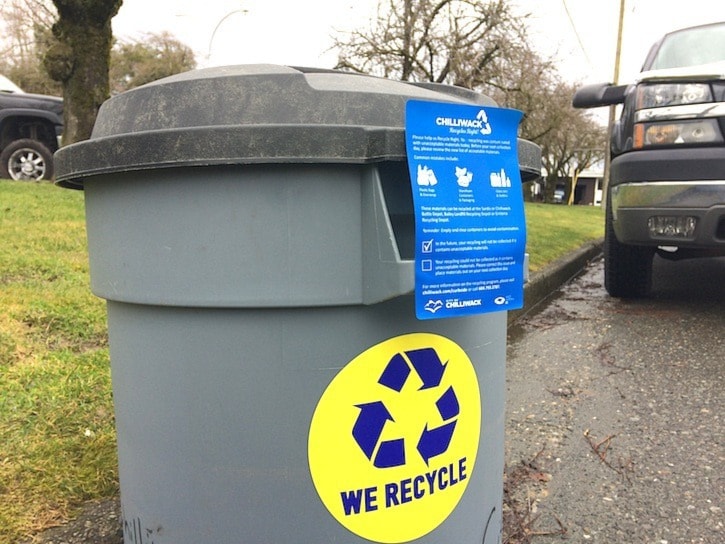Recycling has been with us for a long time.
But only recently has it been so easy.
The practice gained prominence during the Second World War. Supply shortages, coupled with a desire to help on the home front, sparked campaigns to collect and recycle almost every household item. Metal, paper, rubber, even kitchen scraps, where collected in the hope they would somehow help the war effort.
Despite the promises, few fighter planes were ever made from discarded kitchen pots. But the effort was important, nonetheless. It helped galvanize communities like Chilliwack, which were so distant from the fighting in Europe and the Pacific.
The recycling fervour subsided after the war. But the practice never went away. The ubiquitous bottle drive remained a staple of school and service club fund raisers.
It wasn’t until the 1970s, however, that the modern recycling movement really took hold. A growing concern for the environment and the rising cost of energy helped compel governments to take action. Recycling the aluminum pop cans that began to clutter the landscape, for example, used only five per cent of the energy needed to create the originals.
The now-familiar triangle symbol began to appear on products, underlining the three Rs – Reduce, Reuse and Recycle.
But the real change came when curbside recycling was introduced. Suddenly, recycling wasn’t dependent on the Boy Scout bottle drive, or the weekly trip to the nearest recycling depot. Products could be separated at home and left out with the trash for collection.
From the municipal standpoint, the advantage was obvious. Products destined for disposal, could now be diverted. Not only would this extend the life of finite landfills, but some of the costs could also be recovered.
In Chilliwack, the curbside program has been embraced. Since its introduction, the amount of recyclable material diverted from the Bailey landfill has risen by 260 per cent.
Currently, an average of 386 tonnes of recyclable material is diverted from the landfill each month.
But that could change, if you believe Facebook posts and online comments.
As of March 1, the rules around Chilliwack’s recycling program have changed. There is confusion, frustration and anger – and a threat to ignore the program altogether.
“Throw everything into the garbage,” says one online commenter. “Much easier.”
Perhaps.
But recycling was never about us. From the Second World War, to the environmental movement of the ’70s, it was about making the world a better place.
True, convenience does encourage greater participation. And understanding what can and can’t be recycled can be confusing – especially when the recycling symbol appears on most products. (Just because something can be recycled, that doesn’t mean there’s actually a market to recycle it.)
However, I’m old enough to remember a time when we were expected to peel the paper from our tin cans and pound them flat before recycling. We’d drive our glass to the recycling depot, making sure the clear bottles were separated from the coloured.
It was a pain, but it was possible.
Under the new rules, much remains the same. The biggest change is the exclusion of glass. That’s disappointing, but it’s also understandable – one broken bottle can contaminate and entire load of recycling.
I’m not happy about it. But I can work with it. Because frankly, our community has bigger issues to solve than helping me get my pickle jars to the recycling depot.
~ Greg Knill is editor of the Chilliwack Progress
